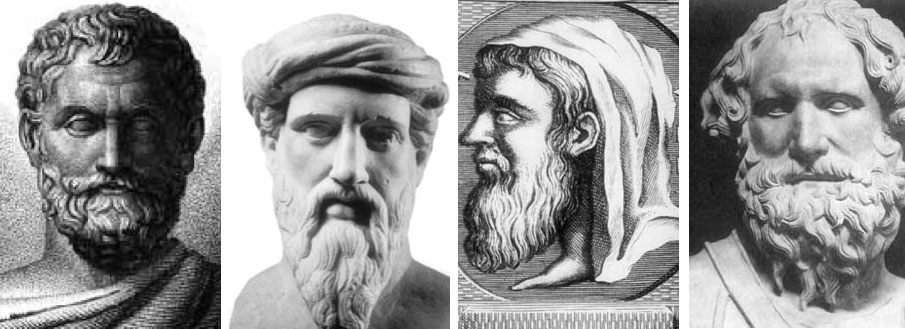

Thales is considered as one of the founding fathers of mathematics. The theorem of Pythagoras, remains the cornerstone of the geometry of the human kind. In the school of Pythagoras, it was shown that the side and the diagonal of the regular 5-gon, which was the logo of this school, are incommensurable line segments, i.e. that their ratio is an irrational number, namely: the golden section Φ = 0,618…, which turned out to be of ever actual distinguished importance in geometry, in nature and in the arts.
The theory of the geometrical continuum of Eudoxos properly dealt with the incorporation in the mathematical reality of such pairs of line segments – which earlier had been tacitly assumed not to exist –, thereby setting the deductive – postulational trend with mathematical reasoning as necessary counterpart for otherwise solely intuitive, and eventually too loose ways of imagining and exploring problems in mathematics and in its applications.
The crystallisation of this mode of thinking in Euclid’s “Elements”, which aim to survey the “Euclidean mathematics” of its time, became a landmark in the history of civilisation. And Euclid’s complementing “Optics” can be seen as one of the first systematic studies of human vision.
As formulated by Coolidge: “It is to the doubts about Euclid’s parallel postulate and the efforts of many thinkers to settle these doubts that we owe the whole modern abstract conception of mathematical science”.
Both from the angle of perspective and from the use of sundials, the conic sections came in focus and Apollonius’ studies of them became the geometrical classics which played a vital role in the discovery of Kepler’s laws of the planetary motions. Archimedes studied geometry and the laws of nature by making use of the powerful reasoning involving “infinitesimals”, thereby anticipating the differential and integral calculus.